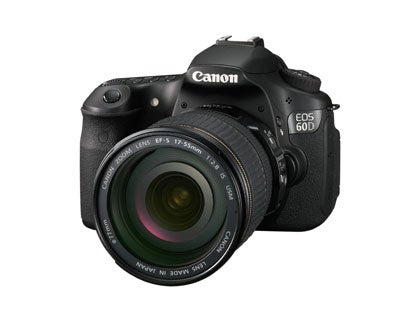UPDATED 8th November, 2012. Released at the end of 2010 the Canon EOS 60D succeeded the EOS 50D that came out in 2008. Despite being over two years old, the Canon EOS 60D is still listed as a current model within Canon’s DSLR range. But can it cut it against the newer competition. The What Digital Camera review finds out...
Canon EOS 60D Review
Design
The design and build of the Canon EOS 60D has changed quite significantly from the 50D. Because of this it fits more naturally between the 550D and 7D. To start with, the body is made from aluminium and polycarbonate resin with glass fibre, as opposed to the magnesium alloy seen on the 7D and the previous 50D.
This has been a bit of a sticking point for EOS users, as it means that the body is lighter and not quite as rugged. Yet, in the hand it still feels very solid and actually has better waterproofing than the old 0D. On the top-plate the quick access buttons in front of the info screen are now all single-use, rather than dual function as on previous models.
The mode dial has added a locking button, which requires you to press and hold the button to allow it to turn. This is to stop the dial accidentally moving but is not a problem I had ever come across and the new dial takes some getting used to.
On the rear the biggest change is the vari-angle nature of the screen. This does mean that the screen can be stored facing the camera for protection and having the ability to use the screen at extreme angles is very handy for shots with live view, and for tripod use.
There is a dedicated live view button placed just to the right of the viewfinder – perfect for a quick thumb press – which also works as a quick record button in video mode. The thumb joystick has disappeared however and, instead, the rear wheel has been incorporated with a multi-directional d-pad.
This means that most of the functions can be controlled from this one controller; rotated, pressed around its edges, or the centre button pushed. Though this is a clever use of space it does seem to be trying to do too much and operation can be a little tricky because of it. The rotation does have an auto locking facility too, which, when enabled, is released by a button below it. The power switch has been moved to the top left and more angular Menu, Info and Quick menu buttons sit above the d-pad controller.
The camera feels modern in its design and, though heavily consumer-oriented in its buttons and layout, remains a solid and well built unit, with only slight nuisances in the mode and rear dial.





